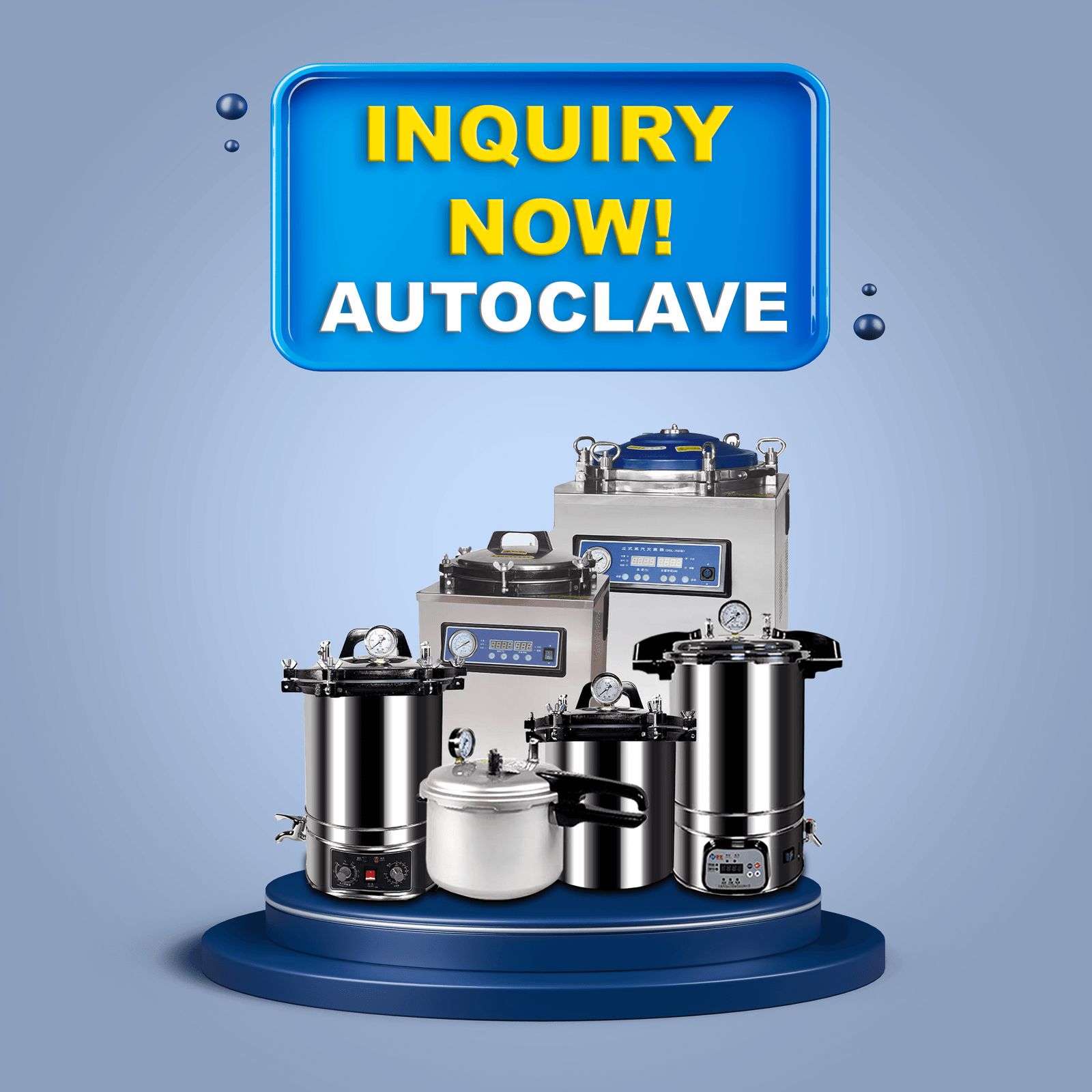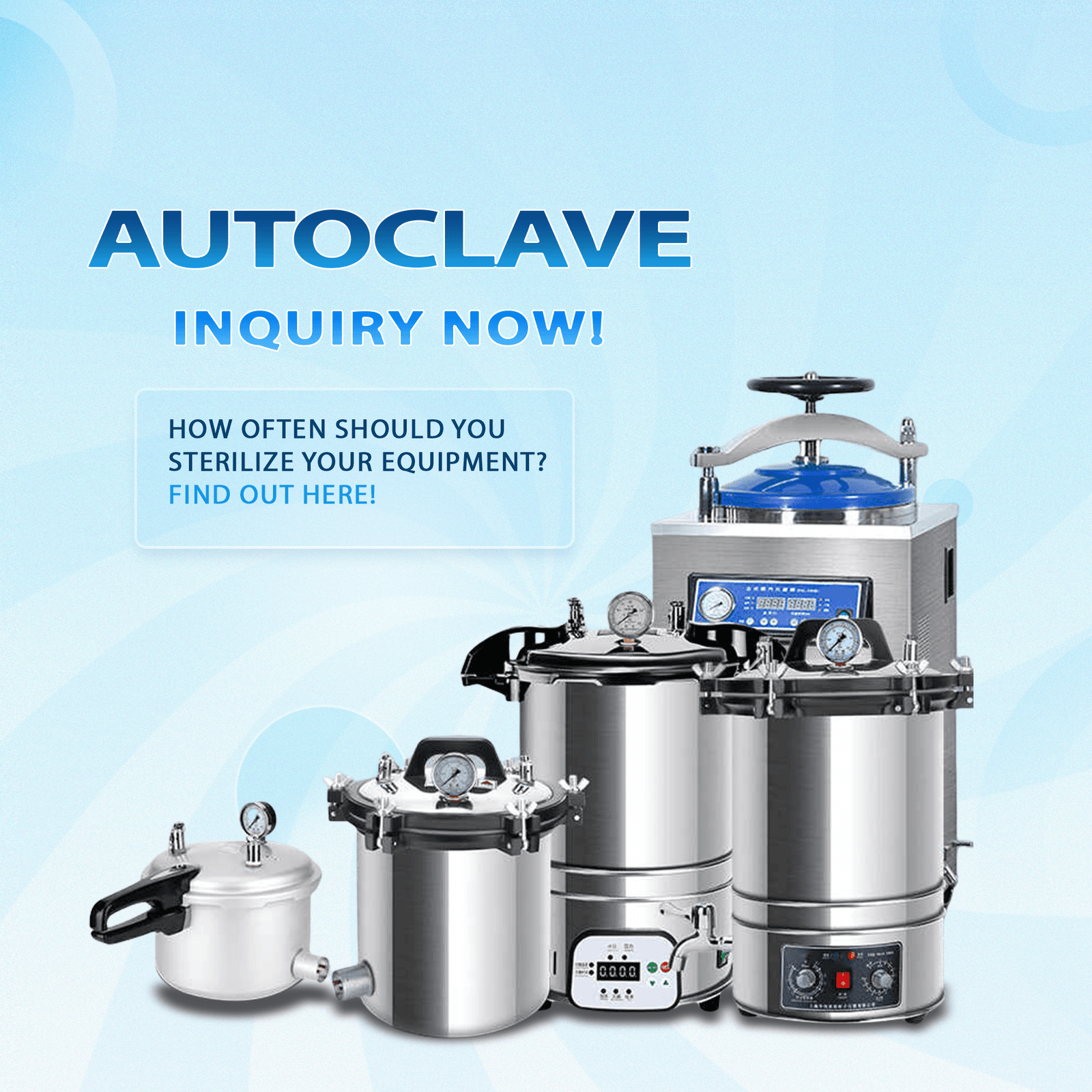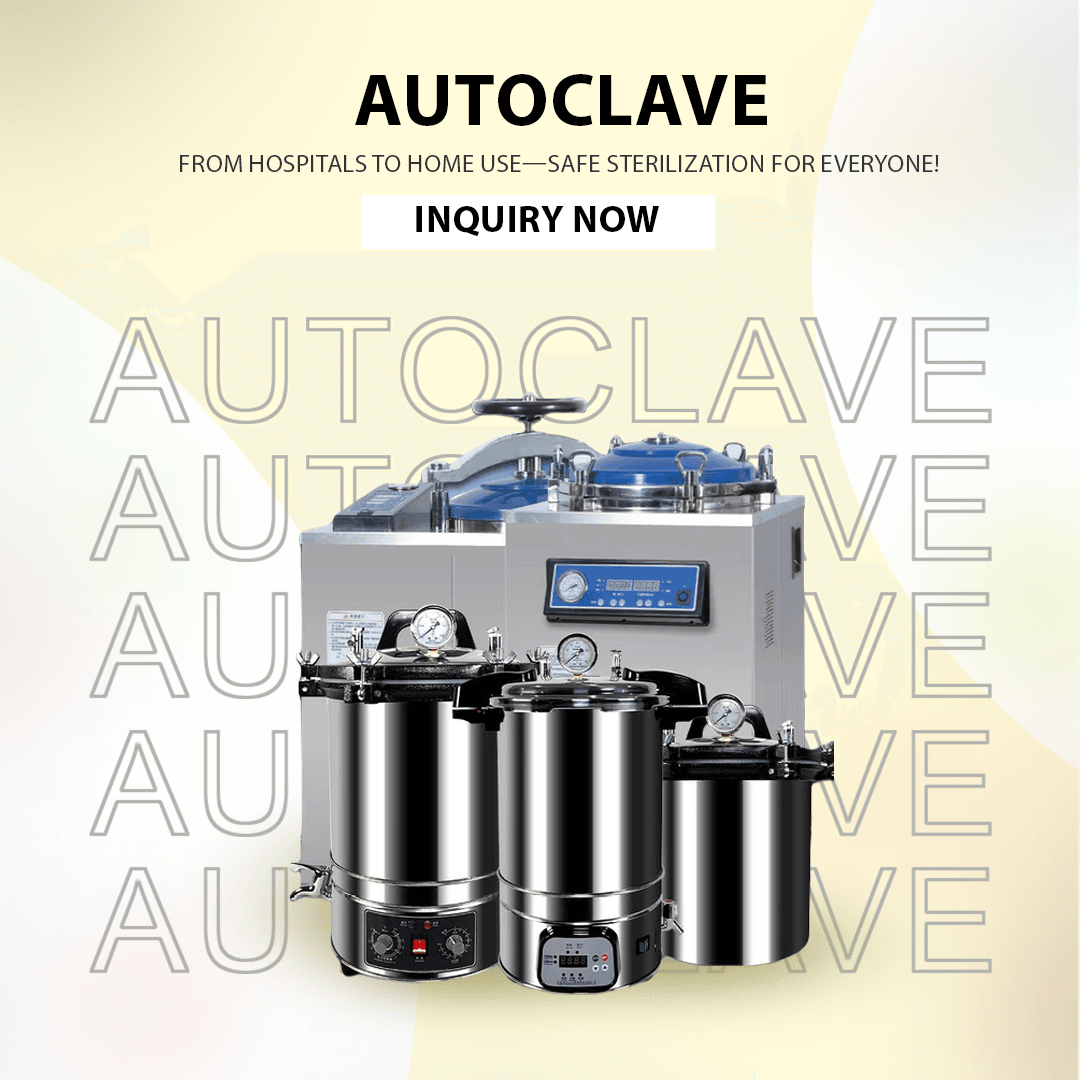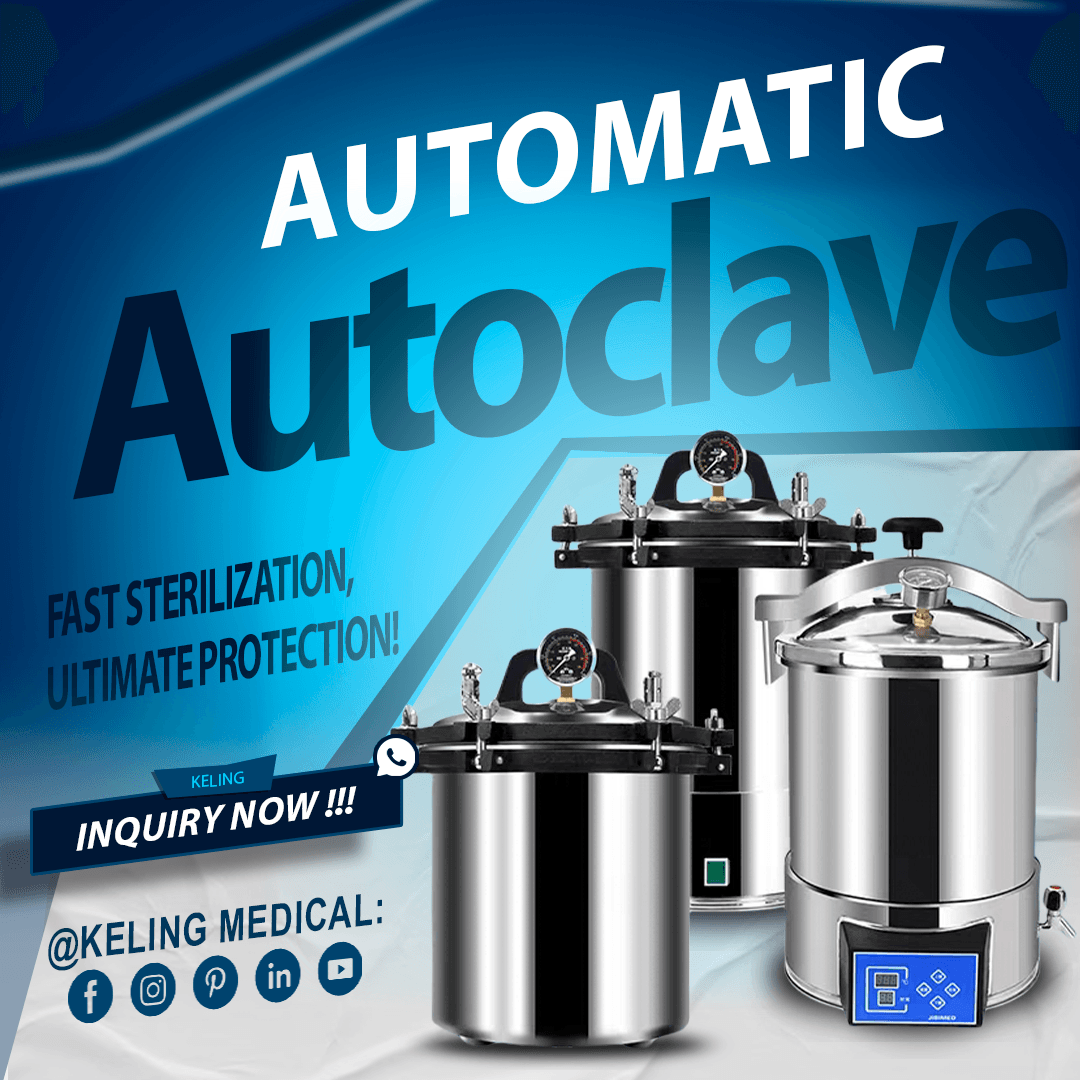
Sterilization represents the elimination process of all microbial life forms to ensure that both instruments and consumables remain free from pathogens. Hospitals require sterilization practices to eliminate infections and prevent cross-contamination between patients. To ensure experimental validity and accurate diagnostics laboratories must implement sterilization procedures.
Sterilization practices help lower the possibility of infections occurring within healthcare facilities.
Quality Assurance maintains dependable laboratory result accuracy.
The organization adheres to health regulatory standards established by medical authorities as well as accrediting institutions.
High-pressure steam is central to steam sterilization which food autoclaves represent as a primary application.
Dry Heat: Suitable for heat-resistant items.
Chemical Sterilization serves as a method to sterilize items which cannot handle high temperature exposure.
Food autoclaves function as high-pressure sterilization units designed to eliminate contaminants from food products. The food autoclave’s design enables the safe and effective sterilization process which meets strict medical and research facility safety standards.
The chamber gets its structure from robust materials that endure extreme pressure and temperature conditions.
Digital Controls enable accurate programming and supervision of sterilization processes.
The safety features of the system incorporate interlocks and pressure release mechanisms.
The food autoclave functions through multiple sequential steps.
The chamber reaches the necessary temperature during preheating.
During sterilization items undergo exposure to steam under high pressure for a specified time period.
The autoclave chamber undergoes cooling while removing surplus moisture.
Food autoclaves find numerous applications:
Food sterilization processes help protect patients from foodborne diseases.
Autoclave sterilization processes secure the cleanliness of dietary treatment tools and research apparatus.
Microbial work requires the preparation of culture media that must be sterile.
High cleanliness standards require specialized sterilization processes for laboratory reagents.
When creating a food autoclave design engineers need to account for several key factors.
The food autoclave design requires durability so it can handle frequent usage and tough operating conditions.
The user interface features straightforward controls for effortless operation.
Energy Efficiency requires reducing both operational costs and environmental impact.
Location: Adequate space, ventilation, and safety considerations.
Compliance: Adhering to local regulations and standards.
Perform system checks to verify functionality prior to every operational cycle.
Monitoring: Continuous observation of cycle parameters.
Maintenance: Regular servicing to ensure optimal performance.
Operators must undergo appropriate training and utilize safety gear to prevent accidents.
Regulatory Compliance: Meeting industry standards and certifications.
Emergency Protocols consist of established procedures to manage system malfunctions and accidents.
Automation: Enhancing control and reducing human error.
Remote Monitoring enables operators to supervise multiple units from one location.
The upcoming developments will include enhancements in IoT capabilities, AI integration, and sustainable design principles.
Cost-Benefit Analysis: Initial investment versus long-term benefits.
Operational savings result from enhanced energy efficiency combined with reduced maintenance expenses.
Distributors gain market competitiveness while improving system reliability.
Hospital Kitchens: Improving food safety protocols.
Laboratory Research: Ensuring uncontaminated environments.
Cross-Disciplinary Use: Adapting to various sterilization needs.
Providing complete training to guarantee operators master autoclave operations.
Service Agreements: Providing ongoing support and maintenance.
Temperature Fluctuations are managed through sensor repairs and necessary calibration procedures.
Digital Interface Problems: Resolving control panel malfunctions.
Ensuring the chamber seals remain intact to prevent any potential leaks.
Hospitals and laboratories depend on food autoclaves as indispensable sterilization tools. The combination of specialized design features with strong engineering principles and high standard compliance enables processing of food items and related machinery to fulfill maximum hygiene specifications. Medical device distributors and procurement specialists should consider food autoclaves as investments that enhance safety and efficiency while ensuring compliance with regulations and supporting patient welfare and research precision.
Q1: What is the primary function of a food autoclave? A: The primary function is to sterilize food items and related supplies to eliminate harmful microorganisms.
Q2: How does a food autoclave differ from a standard autoclave? A: Food autoclaves are designed with specific features for the safe sterilization of food products, ensuring they remain consumable while meeting medical standards.
Q3: What safety features are crucial in a food autoclave? A: Key safety features include interlock systems, pressure release valves, and digital monitoring for cycle control.
Q4: Can food autoclaves be integrated into automated systems? A: Yes, modern food autoclaves often come with automation capabilities for improved efficiency and consistency.
Q5: How often should a food autoclave be maintained? A: Regular maintenance checks are recommended, with specific intervals depending on usage frequency and manufacturer guidelines.
Q6: What are the benefits of using a food autoclave in a hospital setting? A: Benefits include improved food safety, compliance with health regulations, and reduced risk of infections.
Q7: How does a food autoclave contribute to laboratory research? A: It ensures that media, reagents, and equipment are free from contaminants, which is critical for accurate experimental results.
For further information or to discuss how our food autoclave solutions can meet your needs, please contact us:
E-mail: inquiry@shkeling.com
WhatsApp: +8618221822482
Webové stránky: https://autoclaveequipment.com/
We at Keling Medical are dedicated to providing top-tier sterilization solutions tailored to the unique requirements of hospitals and laboratories. Let us help you elevate your sterilization standards.

Ve zdravotnictví a laboratořích je třeba upřednostnit úplné odstranění nebezpečných mikroorganismů ze všech zařízení a materiálů, což je zásadní krok v ochraně bezpečnosti pacientů a kontrole infekcí. Sterilizace v autoklávu

Zdravotnictví se řídí přísnými předpisy a vyžaduje sterilitu lékařských nástrojů, aby byli pacienti chráněni před infekcemi a byly dodrženy bezpečnostní standardy. Výkonný autoklávový sterilizátor tvoří základní součást systému.

Autoklávy mají ve zdravotnictví zásadní význam, protože sterilizují lékařské nástroje a materiály, což pomáhá kontrolovat infekce. Pravidelná údržba spolu se správným čištěním rozhoduje o tom, zda budou tato zařízení účinně fungovat. Zdravotnické

Autoklávy jsou základním vybavením ve zdravotnictví a při kontrole infekcí, které slouží k udržování sterilních podmínek lékařských nástrojů a laboratorního vybavení a dalších životně důležitých materiálů. Dodavatelé zdravotnického vybavení a odborníci na nákup

Poskytovatelé zdravotní péče musí upřednostňovat sterilitu nástrojů a materiálů, aby účinně zabránili infekcím a chránili zdraví pacientů. Sterilizace v autoklávu se ukazuje jako mimořádně spolehlivá metoda, která nachází široké uplatnění napříč celým světem.

Zdravotnictví vyžaduje přísná opatření pro kontrolu infekcí, a proto jsou pro zajištění bezpečnosti a hygieny zásadní určité podmínky a nástroje. Ve zdravotnických a laboratorních zařízeních, která vyžadují sterilní podmínky.